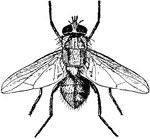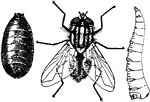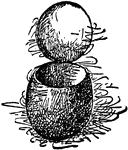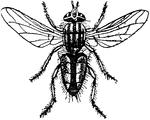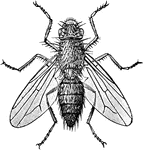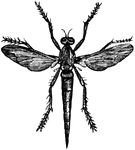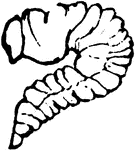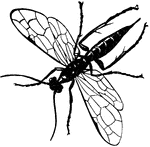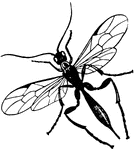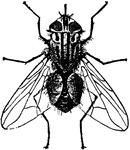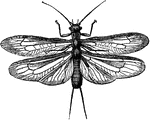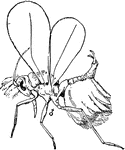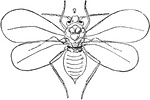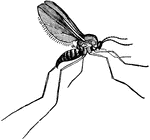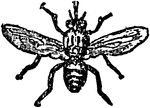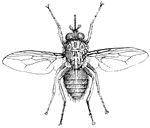
Horse Fly
The horse fly has but one pair of developed wings, the second pair being represented by a pair of balancers:…

Horse Fly
The horse-flies or tabanidae, comprise another set of troublesome creatures, of medium or large…
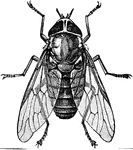
Dorsal View of Horsefly
Tabanus americanus is a species of biting horsefly in the Tabanidae family of horseflies. It was also…
Horse Fly Larva
The larvae are elongated, somewhat flattened creatures, some living in the soil, some in water, and…
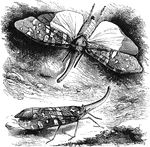
Lantern Fly
"The family of Fulgorina includes the Lantern-flies, of which a large species inhabiting…

Lantern Fly
Lantern-flies may be found on the under side of leaves of various plants, particularly grape, sucking…

Lantern Fly
Lantern-flies may be found on the under side of leaves of various plants, particularly grape, sucking…

Lantern Fly (Fulgora Lanternaria)
"The Lantern-fly is found in large numbers in South America. This remarkable insect enjoys a great renown…
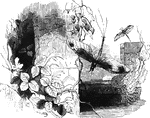
May Fly
"These insects are called Day-flies from the shortness of their existence in the perfect state;…
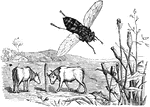
Ox Fly
"The Ox-fly, Oestrus bovis, is three-forths of an inch long, and lays its eggs in the skin of young…

Ruby Tailed Fly
They are rich colored insects, very active in the hottest sunshine and capable of rolling themselves…

Spanish Fly
"These insects are common in the South of Europe, and are especially abundant in Spain, where they are…

Spider Fly
"Spider Fly is a genus of dipterous insects, chiefly allied to the forest fly. The insects are parasitical…
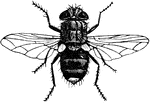
Yellow-Tailed Tachina Fly
The Yellow-Tailed Tachina Fly (Belvosia unifasciata) is an insect in the Tachinidae family and is also…
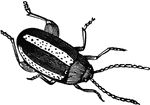
Turnip Fly
The European Turnip-Fly, Haltica nemorum, one of the most destructive species, belongs to a…

Window Fly
A small blue fly, slender and somewhat flattened in appearance, with yellow or reddish legs.

Seed-Corn Maggot
"Seed-corn Maggot (Phorbia fusciceps). a, maggot; b, pupa. Kernels of Maize, showing work of the maggot."…
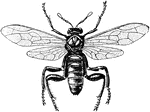
American Sawfly
The American Sawfly (Cimbex Americana) is an insect with an ovipositor resembling a saw blade.
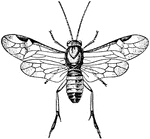
Larch Sawfly
The Larch Sawfly (Pristiphora erichsonii) is an insect resembling a black wasp in the Tenthredinidae…
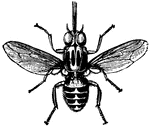
The Tsetse-Fly (Glossina Morsitans)
"It is not dangerous to man, but its sting kills the ox, the horse, the sheep and the dog, and renders…
Head of Tsetse-Fly (Glossina Morsitans)
"It is not dangerous to man, but its sting kills the ox, the horse, the sheep and the dog, and renders…
